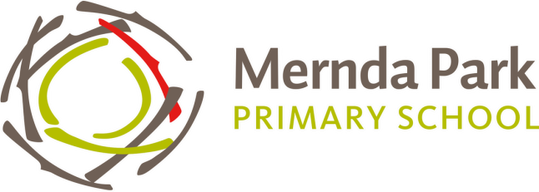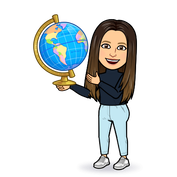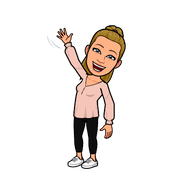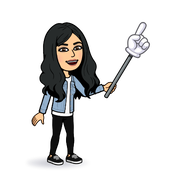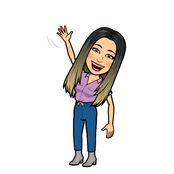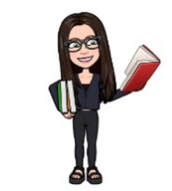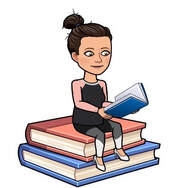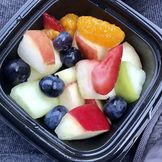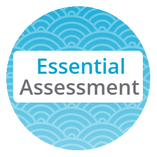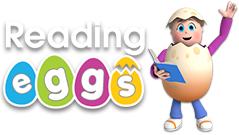Welcome to Carome Learning Community
RYAN |
JENNI |
EBONY |
KARINDA |
Curriculum
The Victorian Curriculum F–10 sets out what every student at MPPS and all Victorian schools should learn during their first eleven years of schooling. The curriculum is the basis of all our MPPS planning documents and guides our teaching at MPPS, as well as forming a common set of knowledge and skills required by students for life-long learning, social development and active and informed citizenship. Further to this the Victorian Curriculum F–10 incorporates the Australian Curriculum and reflects Victorian priorities and standards.
Further information is available http://victoriancurriculum.vcaa.vic.edu.au/
Respectful Relationships (RR) is a comprehensive approach to the primary prevention of violence against women and children. As a school we are dedicated to promoting and modelling respect, positive attitudes and behaviours with the aim of teaching our children how to build healthy relationships, resilience and confidence. The whole school approach to RRRR goes beyond curriculum, recognising that to drive real change, classroom learning needs to be reinforced by what is modelled within the school community.
Further information is available http://www.education.vic.gov.au/about/programs/Pages/respectfulrelationships.aspx
Further information is available http://victoriancurriculum.vcaa.vic.edu.au/
Respectful Relationships (RR) is a comprehensive approach to the primary prevention of violence against women and children. As a school we are dedicated to promoting and modelling respect, positive attitudes and behaviours with the aim of teaching our children how to build healthy relationships, resilience and confidence. The whole school approach to RRRR goes beyond curriculum, recognising that to drive real change, classroom learning needs to be reinforced by what is modelled within the school community.
Further information is available http://www.education.vic.gov.au/about/programs/Pages/respectfulrelationships.aspx
Labelling your child's belongings |
Brain Food |
Home Learning
Carome Learning Community students are expected to read 15-30 minutes most evenings. Students need to record the title of their book and the page numbers they have read in their diary. We ask that diaries come back to school every day, signed by a parent or guardian. Teachers encourage students to consistently bring their diaries to school by awarding Dojo points.
You can: read to your child, listen to your child read or have your child read to you. Talk to your child about their reading. It’s fun to discuss storyline, characters, setting and predict what is going to happen next.
All students are encouraged to access Reading Eggs, Essential Assessment and Soundwaves at home, to support learning that is happening at school.
You can: read to your child, listen to your child read or have your child read to you. Talk to your child about their reading. It’s fun to discuss storyline, characters, setting and predict what is going to happen next.
All students are encouraged to access Reading Eggs, Essential Assessment and Soundwaves at home, to support learning that is happening at school.
Victorian Curriculum Snapshot
English
|
Reading
By the end of Level 3, we aim that students are able to:
|
Writing
By the end of Level 3, we aim that students are able to:
|
Speaking & Listening
By the end of Level 3, we aim that students are able to:
|
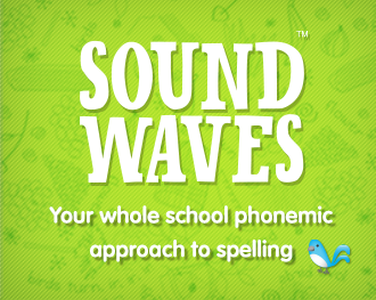
Sound Waves
This year at MPPS we are continuing with the Sound Waves as part of our curriculum. This is a word study program designed to develop reading, spelling and writing skills through phonemic awareness. This is essentially a knowledge and understanding of sounds and sound patterns of our language. Our students will be working through their student activity books each week to study a different sound and the different letter patterns used to represent that sound. Students also have an online login code that provides access to games and activities that helps students consolidate the spelling words that are being studied in the classroom. Students are encouraged and expected to access Sound Waves at home to reinforce their understanding of the sound we are studying that week. You can help your child by accessing Sound Waves at home and playing the games and completing the activities found there.
This year at MPPS we are continuing with the Sound Waves as part of our curriculum. This is a word study program designed to develop reading, spelling and writing skills through phonemic awareness. This is essentially a knowledge and understanding of sounds and sound patterns of our language. Our students will be working through their student activity books each week to study a different sound and the different letter patterns used to represent that sound. Students also have an online login code that provides access to games and activities that helps students consolidate the spelling words that are being studied in the classroom. Students are encouraged and expected to access Sound Waves at home to reinforce their understanding of the sound we are studying that week. You can help your child by accessing Sound Waves at home and playing the games and completing the activities found there.
Mathematics
Number & Algebra
By the end of Level 3, we aim that students can:
By the end of Level 4, we aim that students can:
By the end of Level 3, we aim that students can:
- count and order numbers to and from 10 000
- recognise the connection between addition and subtraction, and solve problems using efficient strategies for multiplication;
- recall addition and multiplication facts for single-digit numbers;
- represent money values in various ways and correctly count out change from financial transactions;
- model and represent unit fractions for halves, thirds, quarters, fifths and eighths, and multiples of these up to one;
- classify numbers as either odd or even;
- continue number patterns involving addition or subtraction;
- explore simple number sequences based on multiples.
By the end of Level 4, we aim that students can:
- recall multiplication facts to 10 x 10 and related division facts;
- choose appropriate strategies for calculations involving multiplication and division and estimate answers accurately enough for the context;
- solve simple purchasing problems with and without the use of digital technology;
- locate familiar fractions on a number line, recognise common equivalent fractions in familiar contexts and make connections between fractions and decimal notations up to two decimal places;
- identify unknown quantities in number sentences;
- use the properties of odd and even numbers and describe number patterns resulting from multiplication;
- continue number sequences involving multiples of single-digit numbers and unit fractions, and locate them on a number line.

Measurement and Geometry
By the end of Level 3, we aim that students can:
By the end of Level 4, we aim that students can:
Statistics and Probability
By the end of Level 3, we aim that students can:
By the end of Level 4, we aim that students can:
By the end of Level 3, we aim that students can:
- use metric units for length, area, mass and capacity;
- tell time to the nearest minute;
- identify symmetry in natural and constructed environments;
- use angle size as a measure of turn in real situations and make models of three-dimensional objects;
- match positions on maps with given information and create simple maps.
By the end of Level 4, we aim that students can:
- compare areas of regular and irregular shapes, using informal units;
- solve problems involving time duration;
- use scaled instruments to measure length, angle, area, mass, capacity and temperature of shapes and objects;
- convert between units of time;
- create symmetrical simple and composite shapes and patterns;
- classify angles in relation to a right angle;
- interpret information contained in maps.
Statistics and Probability
By the end of Level 3, we aim that students can:
- create questions and plan investigations that involve collecting data;
- interpret and compare data displays;
- conduct chance experiments, list possible outcomes and recognise variations in results.
By the end of Level 4, we aim that students can:
- describe different methods for data collection and representation, and evaluate their effectiveness;
- construct data displays from given or collected data;
- list the probabilities of everyday events;
- identify dependent and independent events.
Personal and Social Capability –
Respectful Relationships
Throughout the curriculum, teachers at Mernda Park Primary School aim to provide activities and a learning environment where students have the opportunity to:
In RR, students engage and actively participate in rich discussions and collaborative activities to enhance their Speaking and Listening skills. Students continue to build and maintain relationships with others by making suggestions, explaining their ideas, and share their diverse traits and culture within the Learning Community.
- explain the consequences of emotional responses in a range of social situations;
- recognise personal strengths and challenges and identify skills they would like to develop;
- suggest strategies for coping with difficult situations;
- persist with tasks when faced with challenges and adapt their approach when first attempts are not successful;
- discuss the value of diverse perspectives and through their interactions they demonstrate respect for a diverse range of people and groups;
- describe factors that contribute to positive relationships with peers, other people at school and in the community;
- explain characteristics of cooperative behaviours and they use criteria to identify evidence of this in group activities
- identify a range of conflict resolution strategies to negotiate positive outcomes to problems.
In RR, students engage and actively participate in rich discussions and collaborative activities to enhance their Speaking and Listening skills. Students continue to build and maintain relationships with others by making suggestions, explaining their ideas, and share their diverse traits and culture within the Learning Community.
Japanese
Students are going to learn how to read a Hiragana Chart.
Hiragana is a part of the Japanese writing system. It is used to write words originating in Japan. Our aim in Term 4 is to be able to use the Hiragana chart when writing words and sentences in Japanese. Students are also going to practice Jingle Bell in Japanese. This will be performed at the Christmas Concert.
楽しもうTanoshimou means let’s have fun.
Hiragana is a part of the Japanese writing system. It is used to write words originating in Japan. Our aim in Term 4 is to be able to use the Hiragana chart when writing words and sentences in Japanese. Students are also going to practice Jingle Bell in Japanese. This will be performed at the Christmas Concert.
楽しもうTanoshimou means let’s have fun.
Class Dojo
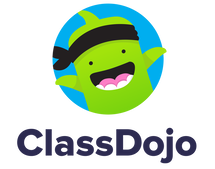
To help us create a positive culture in our Learning Community, we use Class Dojo to acknowledge positive behaviours that display our CARE values. Teachers can encourage students to display skills or values using Class-Dojo as an incentive — whether it's working hard, being kind, helping others. This is done by awarding points that are displayed electronically in the Learning Community or Specialist class. Using Class Dojo can help student’s emotional literacy grow as they have the opportunity to receive immediate, regular and positive feedback in a fun visual way.
Specialist Programs
Monday |
Tuesday |
Wednesday |
Thursday |
Friday |
Assembly |
Group 1- Japanese Group 2- Physical Education Group 3 - Visual Arts Group 4 - Visual Arts Group 5 - Performing Arts Group 6 - Physical Education Lunch Time Singing Club |
All Groups - Library Group 1- Visual Arts Group 2- Japanese Group 3 - Physical Education Group 4 - Performing Arts Group 5 - Japanese Group 6 - Japanese Lunch Time Sports Club |
Group 1- Physical Education Group 2- Performing Arts Group 3 - Performing Arts Group 4 - Physical Education Group 5 - Visual Arts Group 6 - Visual Arts Lunch Time Origami Club |
Group 1- Peforming Arts Group 2- Visual Arts Group 3 - Japanese Group 4 - Japanese Group 5 - Physical Education Group 6 - Performing Arts Lunch Time Sports Club |
